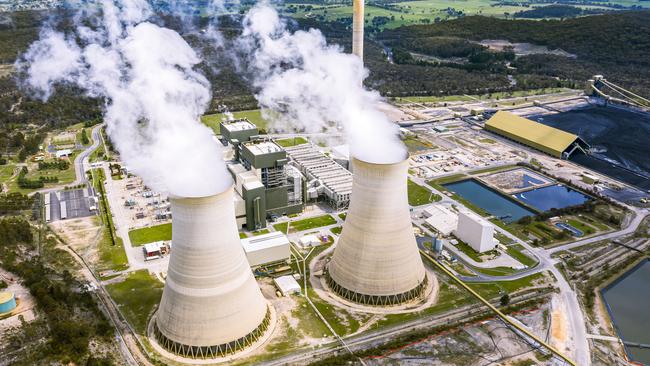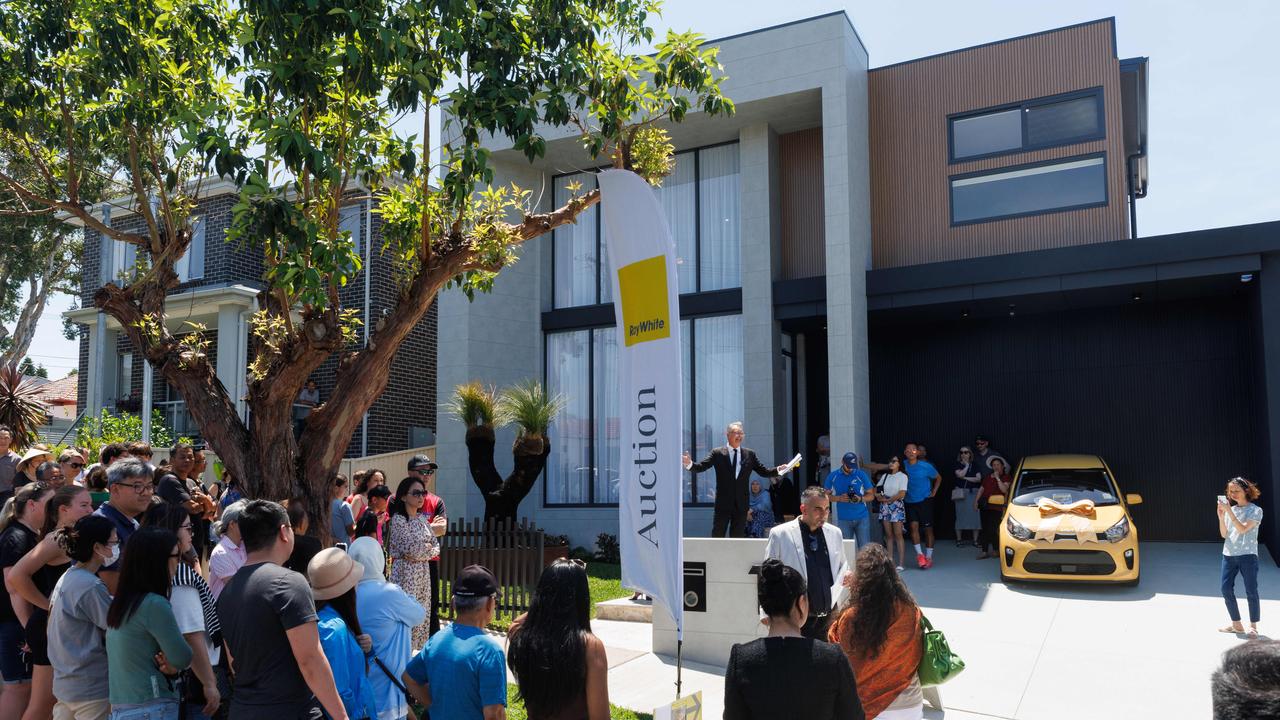Australian Energy Market Operator figures show electricity prices fell 56pc in the December quarter
Gas and electricity prices have rocketed, but have eased from all-time highs, following intervention from the Albanese government.

Business
Don't miss out on the headlines from Business. Followed categories will be added to My News.
East-coast gas prices hit their highest levels for the fourth quarter on record but a controversial government intervention just before Christmas significantly cut electricity futures for the next two years.
It signals an easing of energy market conditions as a mandated cap filters through.
Households may experience a softening of their soaring power bills this year; data released by the Australian Energy Market Operator showed electricity prices fell by 56 per cent in the December quarter from three months earlier and coal output hit an all-time low as renewables soaked up more supply across the grid.
East-coast gas prices recorded $17.80 per gigajoule for the three months to December 31, which was well off a record $26GJ over the previous three months, but was still the highest fourth quarter on record in a nod to the extraordinary pressure which swept global gas markets last year following the outbreak of war in Ukraine.
The decision by the federal government to cap prices at $12GJ before Christmas resulted in the 2023 electricity futures price falling steeply. Prices dropped between 41 per cent in South Australia and 46 per cent in Queensland from the end of the third quarter.
“The expectation and then announcement of government intervention through the quarter saw reductions in futures prices for later years similar to those for 2023 across the mainland regions,” AEMO noted.
Wholesale electricity prices averaged $93 per megawatt hour during the December quarter, dropping 57 per cent from the September quarter high of $216 MWh, but still well above the average of $52 MWh a year ago.
AEMO said sustained high commodity prices, impending coal unit outages and tight gas supply led to futures prices staying elevated early in the quarter, before declining through November, and sharply in December.
“Following the federal government’s temporary capping of wholesale domestic gas and thermal coal markets on 9 December, 2023 electricity futures prices saw steep falls in the mainland states through to the end of the quarter,” AEMO said.

Federal Energy Minister Chris Bowen said the market operator’s report showed wholesale prices were continuing to decline from their peak during winter.
“The reduced prices were influenced by wind and grid-scale solar, further proof renewables are the cheapest form of energy. Importantly it shows the sharp decline in energy futures from December after the government announced the energy price relief plan,” Mr Bowen said.
The quarter was notable for the continuing decline of coal use. Black coal-fired power generation output fell by 798MW to the lowest level in any quarter since the national electricity market started in 1998 and some 8 per cent lower than the fourth quarter of 2021, the previous lowest three-month period.
AEMO pointed towards the pending closure of AGL Energy’s Liddell coal plant in April this year, outages in Queensland and the continuing surge of solar and renewable supplies.
In Victoria, brown coal-fired generators also produced less output, down by 128MW to the lowest level since 1998, largely driven by increased outages at Loy Yang A.
Gas-fired generation fell by 93MW to the lowest quarterly output since the first quarter of 2004, driven by low demand and high gas prices, AEMO said.

Output from wind and grid-scale solar grew in the fourth quarter, producing 20 per cent of total generation in the grid as new facilities were connected and commissioned.
Renewables increased 645 MW from a year ago to a record quarterly average of 4532MW; large-scale solar hit an all-time average output record of 1644MW due to a boost in Queensland and NSW. Average wind output of 2888 MW was also a record high during the period.
The rise of clean energy and reduction in coal meant emissions fell to the lowest quarter on record at 26.4 million tonnes of carbon dioxide equivalent, or some 6 per cent lower than a year prior.
The Albanese government last week said a reduction in electricity price rises forecast by the energy market was due to its energy price relief plan, and showed it was on track to reduce the increase in power bills by an average of $230.
The new Treasury figures compare 2023 wholesale electricity prices in November (prior to the release of the government’s policy) with those from December, and show forecast wholesale prices for 2023 have dropped by 44 per cent in Queensland, 38 per cent in NSW, 32 per cent in South Australia, 29 per cent in Victoria and an average 36 per cent across the four states.
The government said this meant it was on track to deliver retail electricity bills on average $230 lower than they otherwise would have been in 2023-24.
Australian Energy Council chief executive Sarah McNamara said she expected the gas price cap, which was never going to have an “overnight and immediate effect”, would deliver energy bill relief for consumers in 2024.
The Australian’s analysis of current market offers from Origin, AGL and EnergyAustralia shows prices have increased by 30 per cent in Queensland, 22 per cent in NSW, and 19 per cent averaged out across those states, Victoria and SA over the past year.
Households are set to come under even more pressure, with EnergyAustralia a week ago announcing its residential gas customers in Victoria on variable market contracts would see their bills increase by an average of 26.7 per cent from February 1.
Origin and AGL said their rates would increase by 22.1 per cent and 21.4 per cent respectively from next month.
Originally published as Australian Energy Market Operator figures show electricity prices fell 56pc in the December quarter



